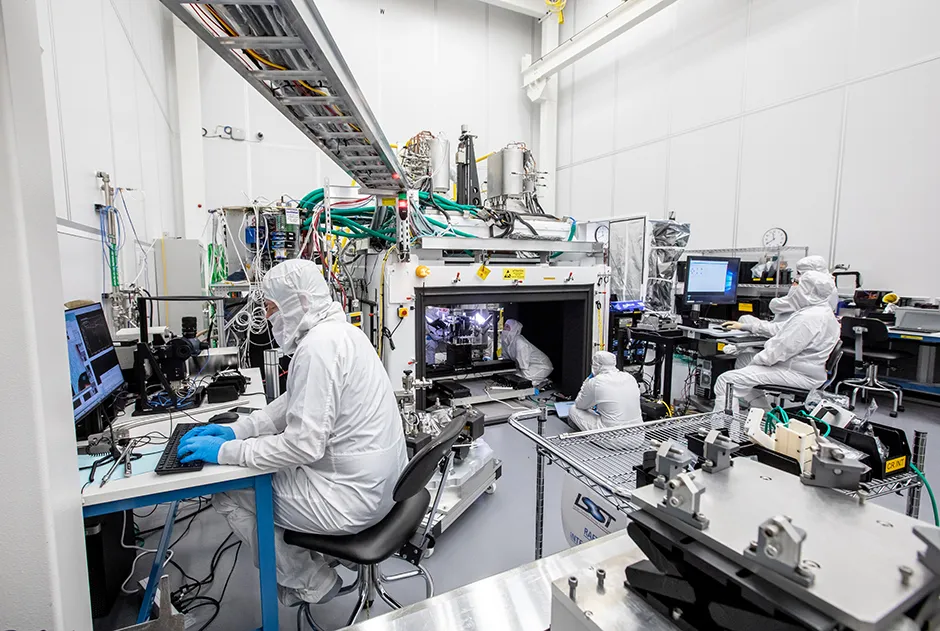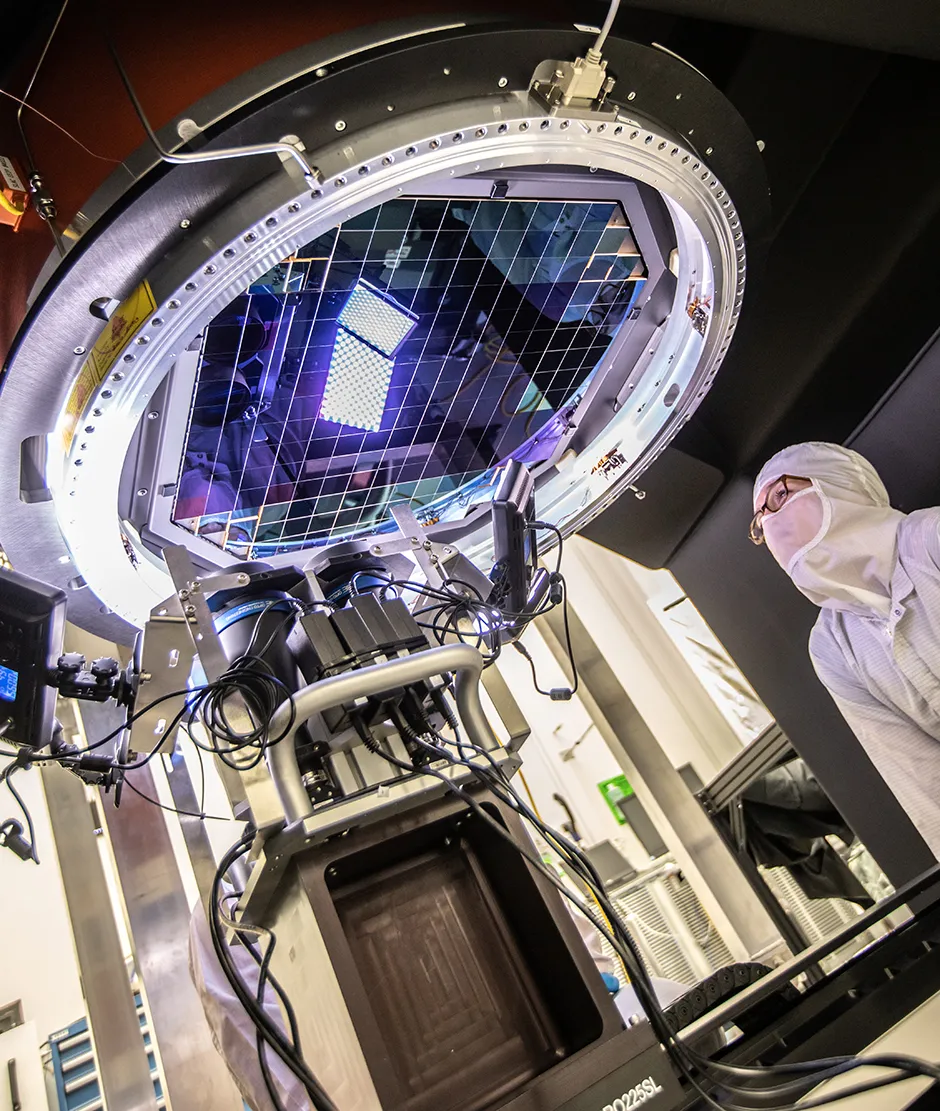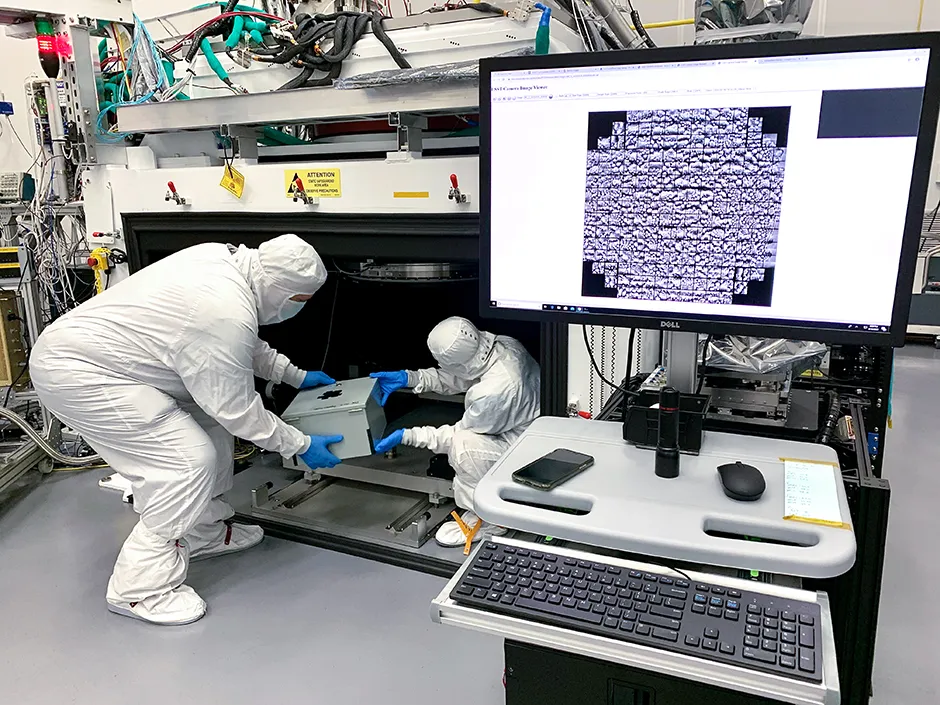Pictures help us make sense of the world around us. From cave paintings, doodles and diagrams, to maps, sketches and photographs, as our tools for depicting the world have improved, so too has our understanding of it. And the device you see in this article might be the most advanced picturing tool yet.
It’s the focal plane of the Legacy Survey of Space and Time (LSST) Camera, and is the biggest and most sophisticated piece of photography equipment on – or off – the planet. It’s being developed at the SLAC National Accelerator Laboratory in California for one of the most ambitious astronomy surveys ever undertaken.
See more amazing science picture galleries:
- Wildlife Photographer of the Year launches People’s Choice Award
- A mob of mobula rays wins Ocean Photography Awards 2020
- Incredibly preserved bodies of two men discovered in Pompeii
“It’s going to be a 10-year survey,” says Prof Aaron Roodman, the scientist in charge of the camera’s assembly. “We’re going to takeimages of every part of the southern hemisphere sky that’s visible from a mountaintop in Chile. And we’re doing that to enable a whole host of science projects.”
The LSST Camera won’t just be obtaining a handful of images, though. It’ll be taking around 1,000 every night. And the images will be big. The LSST Camera’s focal plane is 64 x 64cm, giving each image a 9.6 square degrees field of view – enough to contain 40 full moons.

Each of the image sensors in the LSST Camera is 40 x 40mm and 189 of them have been tiled together to create the focal plane. To put that in perspective, a typical DSLR camera uses a single 36 x 24mm image sensor.
But the size and number of images aren’t the only staggering things the LSST Camera will provide. The detail in the images will be unprecedented too, because the focal plane contains 3.2 billion pixels.
When it’s eventually installed in the Simonyi Survey Telescope (itself an equally extraordinary device constructed around a gargantuan 8.4m-diameter primary mirror) at the Vera C Rubin Observatory in Chile, it’ll be capable of detecting light from objects too dim and distant to otherwise be seen.

More detail than ever before
During its decade-long survey, the LSST Camera will picture more of the sky in more detail than ever before.
“We’re going to see 20 billion galaxies,” says Roodman. “We’ll also be able to study our Galaxy, the Milky Way, in incredible detail. We’ll observe billions of stars and get information about how far away they are and whether they’re moving. We’ll also study the Solar System… We expect to see millions of objects. If Planet Nine exists, we have a good shot at seeing it.”
Everything the LSST Camera spots will be studied and used to produce a new catalogue of astronomical objects, which will be the most comprehensive to date. But, as Roodman explains, the aim isn’t only to produce a bigger and more thorough picture of the objects in the Universe: it’s also to show us how those objects change over time.

“The fact that we’ll take images of the sky so fast and repeatedly means that we can study time-variable phenomena in a totally new way. No one has really done that before. [Previous] surveys have typically only looked at the sky a few times. So a project [that pictures it 1,000 times a night] really is ground-breaking,” Roodman explains.
By enabling us to monitor the way in which objects change, the LSST Camera should give us a new window on the fundamental nature of the Universe. In particular, the 95 per cent of it we can’t see that’s made up of the mysterious entities known as dark matter and dark energy.
Dark matter doesn’t absorb or reflect light, but there’s so much of it that it has gravity. And that gravity is enough to distort the light from objects around it, changing their appearance or making it look as if they’re in a different place. The LSST Camera will detect these distortions and use them to map the distribution of dark matter.

Dark energy is another mystery and, since it makes up almost 70 per cent of the Universe, has bigger implications. We know very little about dark energy other than that it’s causing the Universe’s expansion to accelerate, contrary to our understanding of it.
The LSST Camera will allow scientists to precisely measure the gaps between galaxies and gauge how those gaps have grown, hopefully shedding new light on the dark energy that continues to make them grow.
Contending with Starlink
Building a device with such capabilities is not an easy task. Leaving aside the telescope that it’ll be attached to, the LSST Camera alone contains over 5,000 parts, many of which are custom-made, excruciatingly expensive and packed into an uncomfortably tight space. So, needless to say, the focal plane’s construction was nerve-racking and carried out with extreme caution.
The focal plane was finished in January 2020 and since then has been undergoing testing and fine-tuning. The COVID pandemic halted progress for a couple of months, but it’s underway again now and it’s hoped the completed LSST Camera will be ready to be shipped to Chile in 2021 before the survey begins in 2022.

But COVID isn’t the only problem facing the project. The team says that the growing constellation of Starlink satellites belonging to Elon Musk’s SpaceX company threatens its potential for breakthrough observations.
The satellites are intended to provide high-speed internet access across the globe. To do that they must fly in low-Earth orbits and be highly reflective, giving each satellite the potential to blaze a broad and bright streak across the LSST Camera’s images.
Given how far into the depths of space the camera will be looking, any obstructions in the foreground will hide a lot of detail in the distance. A single satellite could obscure a number of distant objects, and the Starlink constellation will contain thousands of satellites, not to mention the thousands more that are set to be launched by other satellite internet companies.

It’s a huge concern for Roodman and everyone involved in the project. “At best it’s going to be a serious nuisance and at worst it’ll really impact our observing,” he says.
“We’ve been working with SpaceX to let them know what we need and they’ve done some things to darken the satellites. I believe one or two of the darker satellites are up now but the brightness hasn’t dropped as much as we’d like.”
While Starlink and similar satellites don’t throw the entire project into jeopardy, in their current form they curtail its ambitious potential. Even so, the picture of the Universe that the LSST Camera gives us will still be bigger than anything before. Maybe not as big as it could have been, but big enough to possibly change our understanding of the cosmos.
- This interview first appeared in issue 357 of BBC Science Focus Magazine–find out how to subscribe here